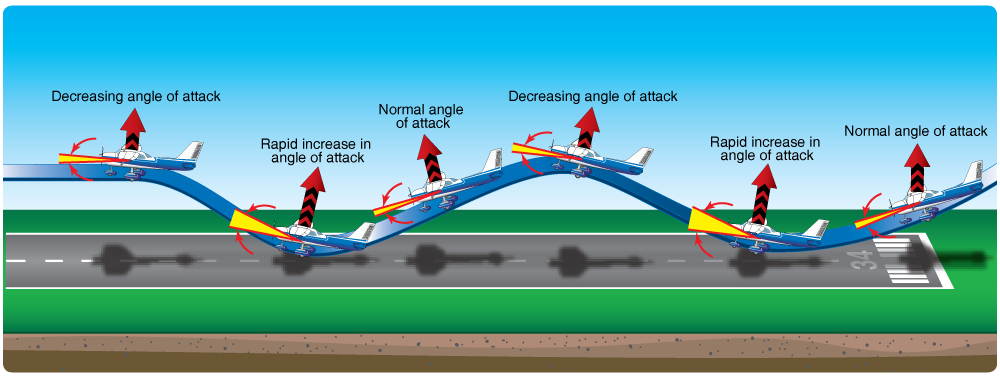Landing an aircraft smoothly without waking the passenger in the back seat is one of the greatest feelings as a pilot. In addition to executing complex maneuvers in the air, consistently landing an airplane smoothly is something that never fails to impress our skyfaring peers. But to get to that point with our landings, it takes a complete understanding of the environment and aircraft, plus regular practice.
As we rehearse, it is not uncommon to inadvertently bounce hard on the runway, float excessively, or land with the nose gear first. It’s a more severe problem when all three errors occur at once, resulting in a “porpoised” landing (so named after a dolphin-like animal that oscillates up and down through the oceans). To prevent landing like an aquatic marine mammal, exercise these tips on your next landing.
A smooth landing is less about the touchdown and more about the setup and approach. Comfortable landings start with stabilized approaches, which means setting up your aircraft correctly by approaching at the right airspeed, altitude, descent rate, and aircraft configuration.

Porpoising can be caused by misjudging where the ground is, improper use of trim, forcing the aircraft onto the runway, or letting the nose drop prematurely. These mistakes are often the result of incorrectly setting up the aircraft for approach; for example, by approaching the runway significantly faster than the recommended approach speed.
When this happens, the aircraft will float as you flare due to greater-than-normal lift. The worst thing you can do at this point is push the nose down. When the nose wheel strikes the runway first and bounces off, it can quickly induce a porpoising effect, a series of hard bumps where the angle of attack increases and causes the aircraft to float again. A pilot that repeatedly attempts to make the landing by forcing the nose down will only increase the severity of the oscillations, prolonging the porpoising condition and potentially causing structure damage to the nose gear, firewall, propeller, and engine.
When the severity of the porpoise is very slight (there is no extreme change in the airplane’s pitch attitude), the recommended recovery procedure is to slightly increase the power, which will cushion the subsequent touchdown, and smoothly adjust the pitch to the proper touchdown attitude.
When the porpoise is severe (there are significant pitch changes and repeated hard bounces), the safest procedure is to immediately execute a go-around. An adept pilot should quickly recognize a severe condition and execute a go-around to prevent the nose gear from collapsing. Even worse than a collapsed nose gear is having the propeller strike the ground, preventing a go-around, and leaving you helpless at the controls.
Do not attempt to salvage a severe porpoised landing condition. If you are unsure of your setup for landing, execute a go-around. Attempts to correct a severe porpoise with flight control and power inputs will likely be out of sequence with the oscillations and make a bad situation even worse. Recover by applying full power, maintaining directional control, adjusting pitch for a safe climb attitude, raising the flaps for climb, and executing a go-around.
If you would like to learn more about stabilized approaches to landing, the instructors at Gleim recommend that you pick up a copy of the Gleim Flight Maneuvers and Practical Test Prep book relevant to your pilot certificate or rating. These books explain every line from the Airman Certification Standards with precise detail in plain English. You’ll know exactly what you need to know, consider, and do with simple step-by-step instructions, illustrations, and common errors relevant to each area of operation and task element for your practical test.
Written by Ryan Jeff, Gleim Aviation Research Assistant

